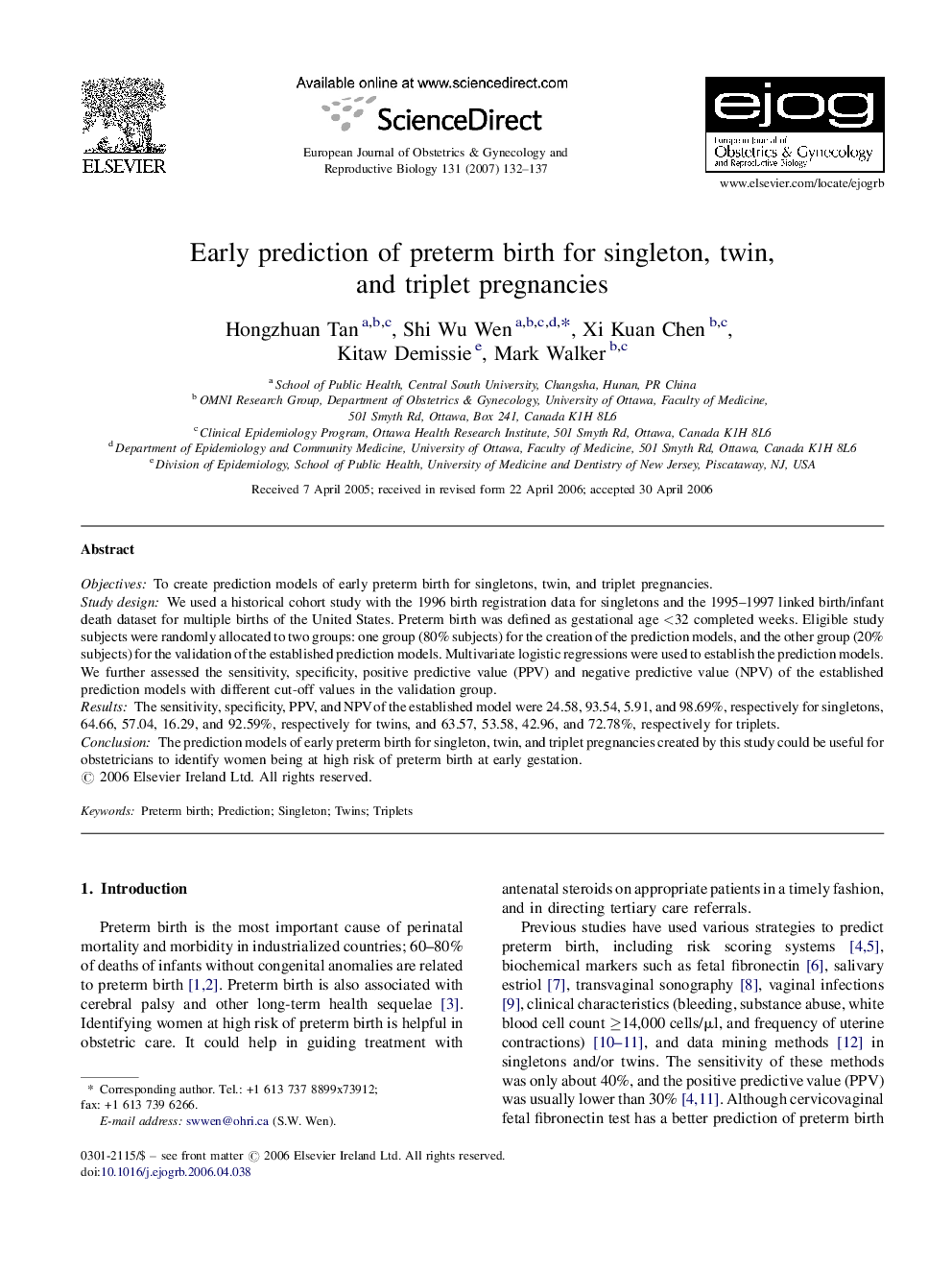| Article ID | Journal | Published Year | Pages | File Type |
|---|---|---|---|---|
| 3922403 | European Journal of Obstetrics & Gynecology and Reproductive Biology | 2007 | 6 Pages |
ObjectivesTo create prediction models of early preterm birth for singletons, twin, and triplet pregnancies.Study designWe used a historical cohort study with the 1996 birth registration data for singletons and the 1995–1997 linked birth/infant death dataset for multiple births of the United States. Preterm birth was defined as gestational age <32 completed weeks. Eligible study subjects were randomly allocated to two groups: one group (80% subjects) for the creation of the prediction models, and the other group (20% subjects) for the validation of the established prediction models. Multivariate logistic regressions were used to establish the prediction models. We further assessed the sensitivity, specificity, positive predictive value (PPV) and negative predictive value (NPV) of the established prediction models with different cut-off values in the validation group.ResultsThe sensitivity, specificity, PPV, and NPV of the established model were 24.58, 93.54, 5.91, and 98.69%, respectively for singletons, 64.66, 57.04, 16.29, and 92.59%, respectively for twins, and 63.57, 53.58, 42.96, and 72.78%, respectively for triplets.ConclusionThe prediction models of early preterm birth for singleton, twin, and triplet pregnancies created by this study could be useful for obstetricians to identify women being at high risk of preterm birth at early gestation.
